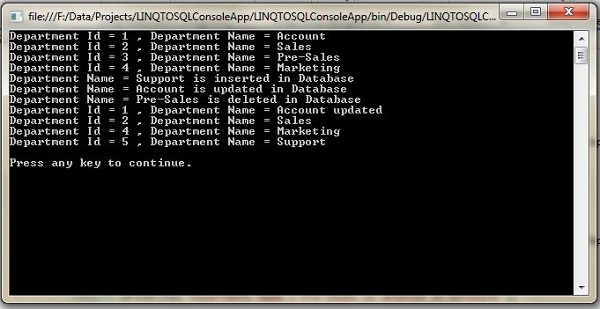
LINQ - Entities
A part of the ADO.NET Entity Framework, LINQ to Entities is more flexible than LINQ to SQL, but is not much popular because of its complexity and lack of key features. However, it does not have the limitations of LINQ to SQL that allows data query only in SQL server database as LINQ to Entities facilitates data query in a large number of data providers like Oracle, MySQL, etc.
Moreover, it has got a major support from ASP.Net in the sense that users can make use of a data source control for executing a query via LINQ to Entities and facilitates binding of the results without any need of extra coding.
LINQ to Entities has for these advantages become the standard mechanism for the usage of LINQ on databases nowadays. It is also possible with LINQ to Entities to change queried data details and committing a batch update easily. What is the most intriguing fact about LINQ to Entities is that it has same syntax like that of SQL and even has the same group of standard query operators like Join, Select, OrderBy, etc.
LINQ to Entities Query Creation and Execution Process
Construction of an ObjectQuery instance out of an ObjectContext (Entity Connection)
Composing a query either in C# or Visual Basic (VB) by using the newly constructed instance
Conversion of standard query operators of LINQ as well as LINQ expressions into command trees
Executing the query passing any exceptions encountered to the client directly
Returning to the client all the query results
ObjectContext is here the primary class that enables interaction with Entity Data Model or in other words acts as a bridge that connects LINQ to the database. Command trees are here query representation with compatibility with the Entity framework.
The Entity Framework, on the other hand, is actually Object Relational Mapper abbreviated generally as ORM by the developers that does the generation of business objects as well as entities as per the database tables and facilitates various basic operations like create, update, delete and read. The following illustration shows the entity framework and its components.
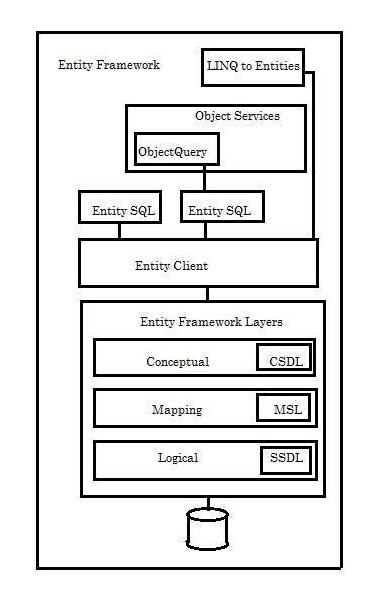
Example of ADD, UPDATE, and DELETE using LINQ with Entity Model
First add Entity Model by following below steps.
Step 1 − Right click on project and click add new item will open window as per below. Select ADO.NET Entity Data Model and specify name and click on Add.
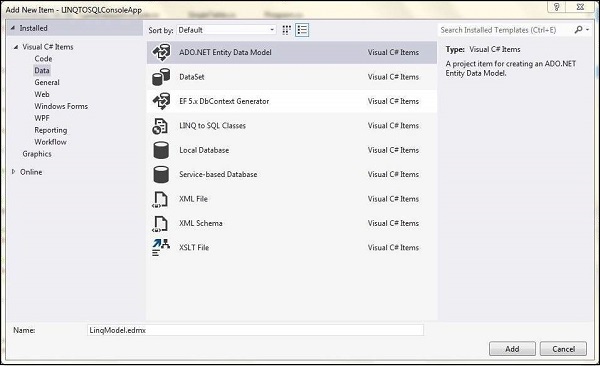
Step 2 − Select Generate from database.
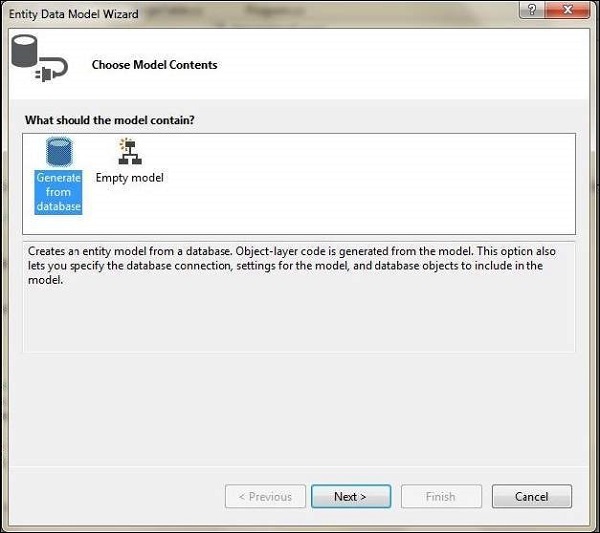
Step 3 − Choose Database Connection from the drop-down menu.
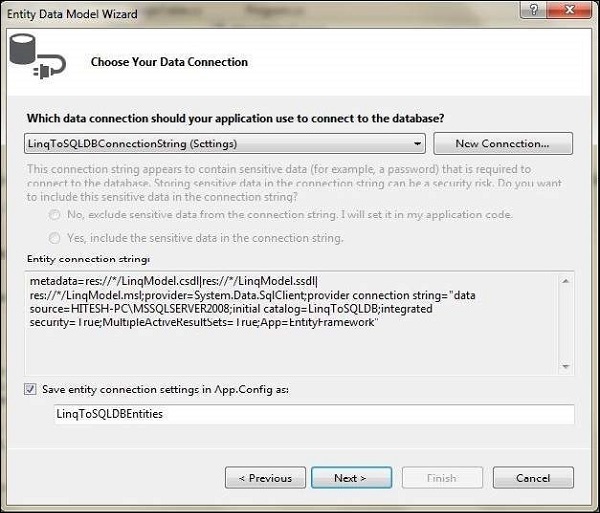
Step 4 − Select all the tables.
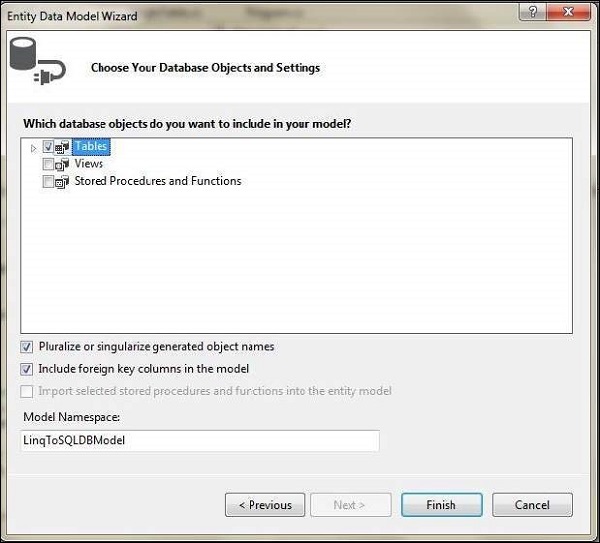
Now write the following code.
using DataAccess;
using System;
using System.Linq;
namespace LINQTOSQLConsoleApp {
public class LinqToEntityModel {
static void Main(string[] args) {
using (LinqToSQLDBEntities context = new LinqToSQLDBEntities()) {
//Get the List of Departments from Database
var departmentList = from d in context.Departments
select d;
foreach (var dept in departmentList) {
Console.WriteLine("Department Id = {0} , Department Name = {1}",
dept.DepartmentId, dept.Name);
}
//Add new Department
DataAccess.Department department = new DataAccess.Department();
department.Name = "Support";
context.Departments.Add(department);
context.SaveChanges();
Console.WriteLine("Department Name = Support is inserted in Database");
//Update existing Department
DataAccess.Department updateDepartment = context.Departments.FirstOrDefault(d ⇒d.DepartmentId == 1);
updateDepartment.Name = "Account updated";
context.SaveChanges();
Console.WriteLine("Department Name = Account is updated in Database");
//Delete existing Department
DataAccess.Department deleteDepartment = context.Departments.FirstOrDefault(d ⇒d.DepartmentId == 3);
context.Departments.Remove(deleteDepartment);
context.SaveChanges();
Console.WriteLine("Department Name = Pre-Sales is deleted in Database");
//Get the Updated List of Departments from Database
departmentList = from d in context.Departments
select d;
foreach (var dept in departmentList) {
Console.WriteLine("Department Id = {0} , Department Name = {1}",
dept.DepartmentId, dept.Name);
}
}
Console.WriteLine("\nPress any key to continue.");
Console.ReadKey();
}
}
}
When the above code is compiled and executed, it produces the following result −
